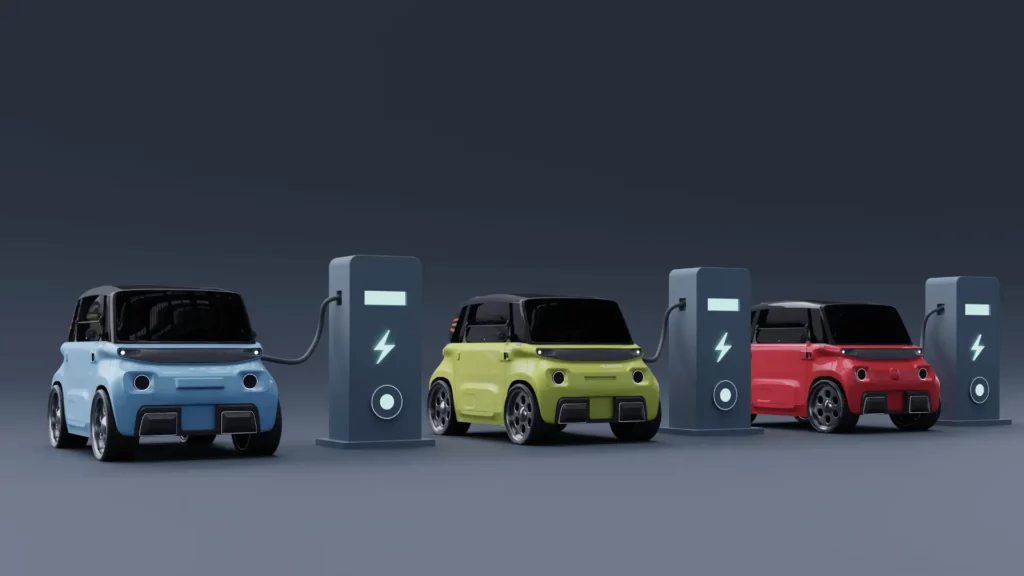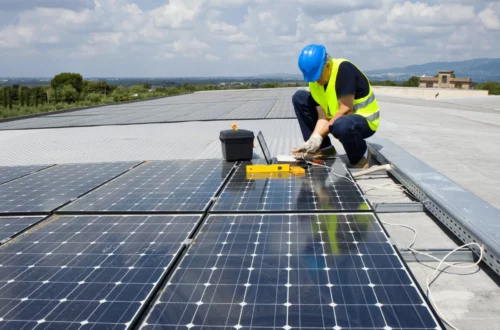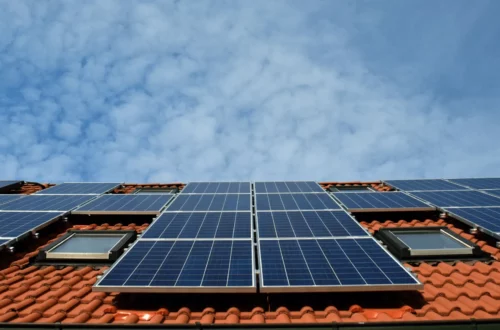Why Can’t Electric Cars Charge Themselves: Understanding the Challenges

Imagine a future where cars seamlessly charge themselves as you drive, eliminating the need for frequent pit stops at charging stations. It sounds like the stuff of science fiction, but self-charging electric cars have long been hailed as the next big thing in transportation. However, the reality is not quite as straightforward.
Self-charging electric cars, also known as “energy-harvesting” vehicles, aim to harness energy from various sources to power themselves on the go. While this concept holds immense promise, there are several limitations and obstacles that hinder its practical implementation.
In this article, we will dive into the world of self-charging electric cars to uncover the reasons behind their unavailability and shed light on the challenges they face in terms of onboard charging capabilities. We’ll explore the role of regenerative braking and solar panels in the self-charging process, discuss current advancements and technologies, and examine potential solutions for enabling self-charging capabilities in electric vehicles.
Keep reading as we unravel the intriguing reality of self-charging electric cars and explore the practical and technological restrictions that stand in the way of their widespread adoption. It’s time to separate fact from fiction and understand the true potential and limitations of these innovative vehicles.
Why Aren’t Electric Vehicles Able To Charge While Moving?
Self-charging electric vehicles have gained attention for their potential to generate electricity while on the move. However, the reality is that electric vehicles are currently unable to charge themselves while driving. There are several reasons for this limitation:
1. Limited amount of energy generated: Electric vehicles generate energy through regenerative braking and other technologies, but the amount produced is relatively small. It is insufficient to fully recharge the vehicle’s battery while in motion.
2. Lack of an engine and alternators: Unlike traditional combustion engine vehicles, electric vehicles do not have an engine or alternators. These components are responsible for generating electricity in conventional cars, but their absence in electric vehicles limits their charging capabilities.
3. Faulty wiring or poor connections: Efficient charging requires proper wiring and connections. If there are faults or poor connections in the charging system, it can hinder the self-charging process.
4. Scarcity of charging stations: The lack of a comprehensive charging infrastructure makes it difficult for electric vehicles to rely on external charging sources while on the move. Without sufficient access to charging stations, self-charging capabilities are limited.
While there are advancements in technologies and initiatives exploring alternatives like solar panels for self-charging, the current state of electric vehicle technology does not support the ability to charge while in motion. This practical limitation signifies the need for further advancements and investments to overcome these challenges.
Isn’t Regenerative Braking a Type of Self-Charging?
Regenerative braking is often misunderstood as a form of self-charging for electric vehicles. While it does contribute to the overall efficiency of EVs, it is not a direct method of replenishing the vehicle’s battery while in motion. Regenerative braking utilizes the kinetic energy generated during deceleration or braking to convert it into electrical energy, which is then stored in the battery for later use. However, the energy generated through regenerative braking is relatively small and is primarily used to power the vehicle’s accessories and assist in maintaining the battery charge. It is not sufficient to fully recharge the battery or enable continuous self-charging capabilities. Therefore, despite its benefits, regenerative braking alone cannot address the limitations of self-charging in electric vehicles.
Also read: Do Electric Cars Have Alternators? Explained!
Challenges and Limitations of Solar Panels for Self-Charging in Electric Vehicles
Integrating solar panels for self-charging in electric vehicles presents certain challenges and limitations that hinder their widespread adoption. While solar energy has the potential to offer a sustainable and renewable charging solution, there are several practical factors to consider.
1. Limited Surface Area: Electric vehicles typically have limited surface area to accommodate solar panels, restricting the amount of energy that can be harvested. The available space must also accommodate other important components of the vehicle.
2. Insufficient Energy Conversion: Solar panels have a limited ability to convert sunlight into usable electrical energy efficiently. The conversion efficiency is influenced by factors such as panel quality, angle, shading, and weather conditions. Thus, the energy generated may not be sufficient to meet the vehicle’s charging demands.
3. Inconsistency and Seasonal Variation: Solar energy availability is highly dependent on weather conditions and the angle at which sunlight hits the panels. Seasonal variations and the unpredictability of weather patterns can impact the reliability and consistency of solar charging.
4. Energy Storage Capacity: While solar panels can generate energy during daylight hours, electric vehicles require energy storage for use during nighttime driving or in low-light conditions. Current battery technology may not have the capacity to store enough energy from solar panels alone.
5. Cost and Practicality: Integrating solar panels into electric vehicles can significantly increase their cost, making them less accessible to a wider market. Additionally, the practicality of having solar panels on the vehicle may be limited due to factors like aesthetics, weight, and aerodynamics.
It is important to note that while solar panels may not be a primary source of self-charging for electric vehicles, they can still contribute to overall energy efficiency and reduce reliance on external charging stations. Future advancements in solar technology, energy storage, and vehicle design may overcome these limitations and make solar charging a more viable option for electric vehicles.
Also read: Can Solar Panels Charge an Electric Car?
Reasons Electric Vehicles Can’t Charge Themselves
There are several key reasons why electric vehicles (EVs) currently cannot charge themselves while in motion:
1. Limited energy generation: Unlike traditional vehicles that generate energy through the combustion of fossil fuels, EVs rely solely on stored electrical energy in their batteries. The amount of energy generated during motion is limited, making it insufficient for self-charging purposes.
2. Absence of an engine: EVs operate on electric motors, which do not possess an internal combustion engine like conventional gasoline-powered cars. This absence eliminates the possibility of utilizing kinetic energy to recharge the batteries, further hindering self-charging capabilities.
3. Lack of alternators: In traditional cars with combustion engines, alternators play a crucial role in generating electricity to recharge the battery while the vehicle is running. In EVs, the absence of alternators limits the ability to produce electricity during motion for self-charging.
4. Faulty wiring and poor connections: Efficient charging relies on proper wiring and connections. However, faulty wiring or poor connections can lead to energy losses and hinder the charging process, making self-charging less feasible.
5. Scarcity of charging stations: The limited availability of charging stations is a practical restriction for EVs. Without ample access to charging infrastructure, the opportunity to charge while in motion becomes a challenge.
These hindrances contribute to the current limitations of EVs when it comes to self-charging. However, ongoing advancements in technology and infrastructure are aiming to overcome these obstacles and enhance the future capabilities of self-charging electric vehicles.
Also read: Factors That Influence Total Driving Range of Electric Vehicles
Insufficient Solar Energy Conversion
Solar energy conversion plays a pivotal role in self-charging electric vehicles, but it faces limitations in terms of providing sufficient energy for this purpose. While solar panels have the potential to harness energy from the sun, their conversion efficiency is often inadequate. Currently available solar panels can only convert a small portion of sunlight into usable electrical energy, which is not enough to fully power the vehicle’s operations. The limited surface area available for solar panels on a vehicle further restricts the amount of energy that can be generated. Despite ongoing advancements in solar technology, achieving the necessary energy conversion efficiency for self-charging electric vehicles remains a significant challenge.
Goes Without an Engine
One of the fundamental differences between electric vehicles (EVs) and traditional gasoline-powered cars is the absence of an internal combustion engine in EVs. This absence directly impacts the charging capabilities of the vehicle. While traditional cars rely on the combustion of fossil fuels to power the engine and generate electricity for various components, EVs operate solely on an electric motor powered by rechargeable batteries.
Without an engine, EVs lack the means to generate electricity on their own while in motion. In traditional cars, the engine drives an alternator that produces electricity to charge the battery and power other electrical components. However, this crucial mechanism is not present in EVs, making self-charging while driving impossible.
Furthermore, the absence of an engine in EVs contributes to their overall efficiency and reduced carbon emissions. However, it also presents a practical limitation when it comes to self-charging capabilities. As of now, EVs heavily rely on external power sources, such as charging stations or home charging systems, to replenish their battery capacity.
Absence of Alternators
Traditional internal combustion engine vehicles rely on alternators to provide a steady supply of electrical power. Alternators, driven by the engine, convert mechanical energy into electrical energy to recharge the battery and power various components of the vehicle. However, electric vehicles operate differently, as they are powered by electric motors.
Electric vehicles do not have alternators because they don’t require an internal combustion engine. Instead, they rely on rechargeable batteries to store electrical energy for powering the motor. Since electric vehicles use regenerative braking to capture and convert kinetic energy into electricity, the absence of alternators does not hinder their ability to charge.
By eliminating the need for alternators, electric vehicles can focus more on optimizing the efficiency of their electric motors and battery systems. This design choice enhances the overall energy efficiency of electric vehicles and reduces reliance on fuel-based systems. Furthermore, without alternators, electric vehicles can achieve a lighter weight, contributing to improved performance and range.
While the absence of alternators might initially seem like a limitation, it is a deliberate and advantageous design choice in the context of electric vehicle technology. As the industry continues to evolve, advancements in battery technology and charging infrastructure will further enhance the feasibility and performance of self-charging electric cars.
Also read: Increased Energy Efficiency Ultimately Leads to Lower Costs
Faulty Wiring or Poor Connections
Proper wiring and connections play a crucial role in ensuring efficient charging for electric vehicles. However, when these components are faulty, it can lead to various issues and hinder the charging process.
One common problem is voltage drop, which occurs when there is resistance in the wiring or poor connections. This can result in a decrease in the amount of power reaching the vehicle’s battery, leading to slower or incomplete charging.
Additionally, faulty wiring or poor connections can cause overheating, which poses a safety hazard and can damage the charging system. It is important to regularly inspect and maintain the wiring and connections to prevent these issues.
To avoid these problems, manufacturers and drivers must prioritize the use of high-quality wiring and ensure proper installation and maintenance. By addressing faulty wiring or poor connections, electric vehicles can have a more reliable and efficient charging system.
Lack of Charging Stations
One of the major limitations faced by self-charging electric vehicles is the scarcity of charging stations. Unlike traditional gasoline-powered cars that have access to a widespread network of fueling stations, electric vehicles rely on charging stations to recharge their batteries. The availability and proximity of charging stations play a crucial role in the feasibility and convenience of electric vehicle ownership.
The inadequate infrastructure of charging stations makes it challenging for electric vehicle owners to find suitable locations for recharging their vehicles, especially during long-distance travels or in remote areas. Limited charging options can result in range anxiety, as drivers need to carefully plan their routes to ensure they can reach a charging station when needed.
To address this issue, efforts are being made to expand the charging infrastructure and establish more charging stations in various locations. Governments, organizations, and private entities are investing in the development of charging networks to support the growing electric vehicle market. However, the lack of charging stations remains a significant hurdle in the widespread adoption of self-charging electric vehicles.
Overall, the limited availability of charging stations poses a practical challenge for electric vehicles, hindering their ability to charge themselves while on the move. As the charging infrastructure continues to expand, the feasibility and convenience of self-charging will improve, bringing us closer to a future with more self-sustaining electric vehicles.
Also read: How Renewable Energy is Transforming the Environment: 5 Major Benefits
Electric Vehicle Battery Shortage
One of the key limitations of self-charging electric vehicles is the shortage of battery capacity. Electric vehicle batteries have a limited storage capacity, which affects their ability to self-charge. As electric cars rely on stored energy to operate, they need a significant amount of power to sustain themselves while on the move. However, the current technology for electric vehicle batteries falls short in providing sufficient energy for self-charging.
The limited storage capacity of electric vehicle batteries hampers their ability to capture and store enough energy from regenerative braking or solar panels. This shortage of battery capacity restricts the amount of energy that can be recovered and used for self-charging purposes. As a result, electric vehicles heavily rely on external charging sources, such as charging stations or home charging units, to replenish their batteries.
To overcome this limitation, advancements in battery technology are crucial. Researchers and manufacturers are actively working on developing batteries with improved storage capacity and energy density. These advancements would enable electric vehicles to store more energy, extend their range, and potentially enhance their self-charging capabilities. However, until these advances become widespread, the shortage of battery capacity remains a significant obstacle in achieving efficient self-charging for electric vehicles.
Inadequate Electricity
One of the significant challenges that hinder the self-charging capabilities of electric vehicles is the inadequate availability of electricity, particularly in remote areas. While electric cars rely on an external power source to charge their batteries, the limited infrastructure for charging stations poses a significant obstacle.
In remote regions, the scarcity of charging infrastructure makes it difficult for electric vehicle owners to find a suitable place to recharge their vehicles. This lack of accessibility severely restricts the ability of electric cars to charge themselves while on the move.
Without a widespread network of charging stations, electric vehicles cannot tap into a readily available electricity source, hindering their ability to self-charge efficiently. This is a practical limitation that the electric vehicle industry is actively working to address through the expansion of charging infrastructure and the promotion of renewable energy sources.
Technology Doesn’t Exist Yet
Although the concept of self-charging electric vehicles is enticing, the reality is that the required technology is not yet available. The development of truly self-charging electric vehicles faces several technological limitations that need to be overcome.
One of the main challenges is finding a practical approach to convert kinetic energy into electrical energy efficiently. While regenerative braking does allow electric vehicles to recover a small amount of energy during deceleration, it is not sufficient to fully charge the vehicle and maintain a continuous power supply.
Another obstacle is the limited efficiency of current solar panels in generating electricity. While solar panels can supplement the charging process, they are not yet capable of generating enough energy to power an electric vehicle entirely. The conversion of sunlight into usable electrical energy is still an area that requires further advancements.
Furthermore, the absence of an internal combustion engine in electric vehicles poses a significant challenge for self-charging capabilities. Traditional cars rely on alternators to convert mechanical energy into electricity. However, electric vehicles lack this component, making it difficult to harness energy generated while driving.
Although researchers and engineers are working towards finding creative and innovative solutions, self-charging electric vehicles remain a technological aspiration. It is important to acknowledge that the technology required to fully realize the concept does not yet exist.
Also read: Top Renewable Energy Sources for a Better Future
Battery Upkeep
Maintaining and upkeeping the battery of an electric vehicle is crucial for its overall performance, including its charging capabilities. Regular maintenance ensures optimal battery health and longevity. Here are some key factors to consider:
Regular Inspections and Cleaning
Periodic inspections and cleaning of the battery are essential to remove any dirt or debris that could hinder its efficiency. Regular checks can also detect any signs of damage or degradation early on, allowing for timely repairs or replacements.
Temperature Control
Extreme temperatures can negatively impact battery performance. It’s important to keep the battery within its recommended temperature range to ensure efficient charging. This may involve parking in shaded areas or using climate control features to regulate the temperature.
Charging Habits
Proper charging habits can significantly impact the battery’s lifespan and its ability to hold a charge. Avoid regularly depleting the battery to its lowest capacity and aim to keep it within the recommended charge range. Opt for slower charging methods when possible, as rapid charging can strain the battery.
Software Updates
Regularly updating the vehicle’s software is essential for optimizing battery performance. Manufacturers often release updates that improve charging efficiency and address any issues or vulnerabilities.
Professional Maintenance
Seeking professional maintenance services from qualified technicians ensures that the battery is inspected, tested, and serviced according to manufacturer guidelines. Professionals can also provide valuable insights and recommendations for maximizing battery longevity.
Conclusion
Self-charging electric vehicles face several limitations and challenges that hinder their ability to charge themselves while in motion. Despite the growing popularity of electric cars, the technology to enable self-charging capabilities is still in its early stages.
One of the main reasons electric vehicles cannot charge themselves while moving is the limited amount of energy generated during the process. Unlike traditional internal combustion engines, electric cars do not have an alternator or a combustion engine to generate electricity. This absence of an engine and alternators greatly restricts the charging capabilities of electric vehicles.
Furthermore, the integration of solar panels for self-charging purposes in electric vehicles is not a common alternative due to practical issues. Solar energy conversion efficiency is still relatively low, making it insufficient to provide the necessary energy to effectively charge the vehicle. Additionally, the limited space available for solar panels on the vehicle’s exterior poses a challenge in harnessing enough energy to sustain self-charging.
Moreover, the scarcity of charging stations and the inadequate availability of electricity for self-charging, especially in remote areas, contribute to the overall limitations of self-charging electric vehicles.
While advancements are being made in electric vehicle technology, such as improvements in battery storage capacity and energy recovery through regenerative braking, fully self-charging capabilities are yet to be realized. Future advancements in technology may address these challenges and pave the way for more efficient and practical self-charging options in electric vehicles.
In spite of these difficulties, the overall efficiency and environmental benefits of electric vehicles make them a vital part of the solution to reducing carbon emissions and combatting climate change. With continued research and development, self-charging electric vehicles may reach their full potential and play a significant role in the transition to greener transportation options.





